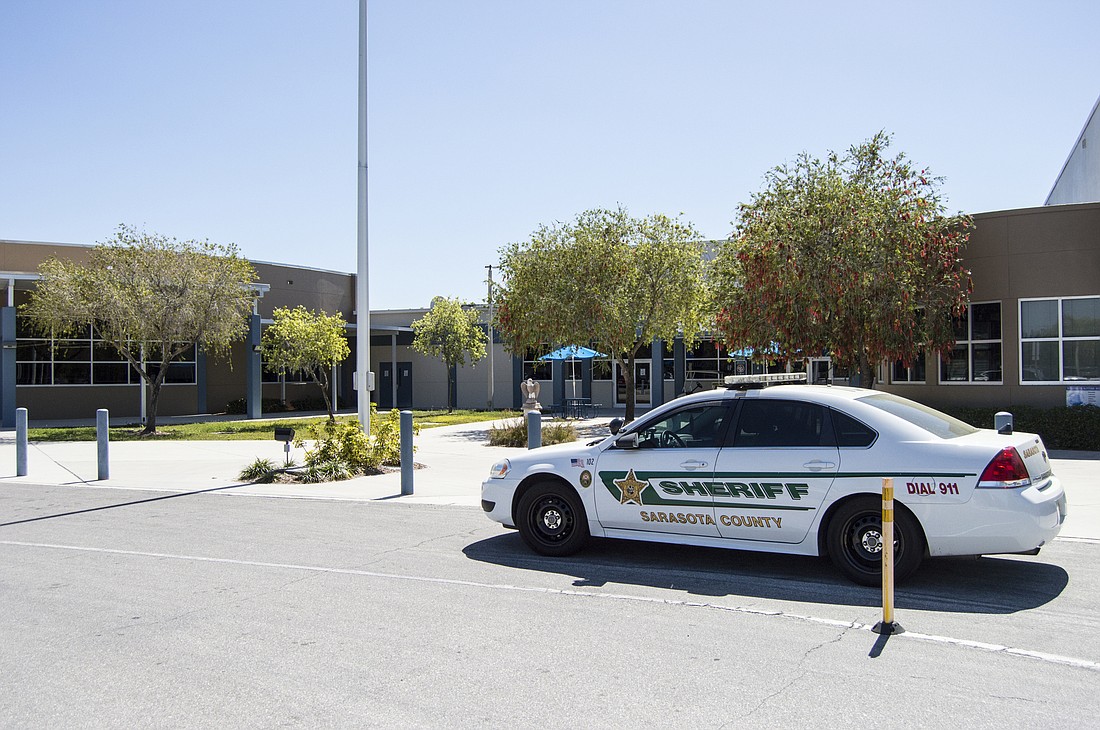- December 20, 2024
-
-
Loading

Loading

As the Sarasota County Sheriff and the School Board solidify a plan to provide security in the next year, the state’s new campus safety law means the district has to pay for some extra things it wasn’t expecting.
After the mass shooting Feb. 14 at Marjory Stoneman Douglas High School in Parkland, Gov. Rick Scott signed a bill requiring all school campuses to have added security, be it from school resource officers, hired security or from training existing employees to carry weapons.
The law said it’s a school district’s responsibility to fund the programs. As a result, Sheriff Tom Knight asked that the district take on the full responsibility of paying for school resource officers, a move cities in the county could follow.
“I don’t know how else to say how important it is that there needs to be serious evaluation on areas to balance our budget,” said Board Chairwoman Bridget Ziegler. “I’m very, very concerned.”
The big question in the security discussion for Sarasota County was how to handle the elementary schools, because all middle and high school campuses already have school resource officers.
Starting April 2, some off-duty law enforcement officers from the Sarasota County Sheriff’s Office, the Sarasota Police Department and the North Port Police Department will report to the district’s 21 unstaffed elementary schools until the last day of school May 24.
As for next school year, the district agreed on a program to hire security deputies for elementary schools.
These deputies would be trained to provide security at schools, but not authorized to assist in other areas of the community. School resource officers provide instruction and mentorship to students, as well as security.
For an additional 14 security deputies and the existing 14 school resource officers from the Sheriff’s Office, the cost would be about $2.6 million in the 2018-2019 school year.
But as part of the move to add security deputies at elementary schools, Knight requested the district pay the full cost of the school resource officer program, which cost the district and Sheriff’s Office $750,000, respectively, each year.
Knight cited the district’s $2.4 million in funding from the state to cover school security costs, which has more than doubled from previous years, and the $56 million from the extra 1-mill property tax voters approved March 20.
The district will need to find an extra $750,000 in the budget to cover the new cost.
“There is zero concern on my part that I can find $750,000 in a $461 million budget,” Sarasota County Superintendent Todd Bowden said. “The law makes it clear it’s the school district’s responsibility.”
At a March 22 meeting, board members declined to discuss where the money may come from in the tentative budget, which was released last week to employees.
Ziegler and board member Eric Robinson wanted to begin identifying areas in the budget to cut. The rest of the board, however, wanted to wait to see if Knight would negotiate the cost sharing, or if the County Commission, which oversees the sheriff’s budget, would consider providing additional funding.
“I don’t particularly think it’s appropriate to not do the exercise and see where we are going to trim the fat,” Ziegler said. Other board members opposed the idea.
“You’re relatively new to this process,” board member Shirley Brown said. “I don’t think we need to start doing them yet because I think we still are in negotiations … I think they would look bad if they said, ‘Wait a minute, we’re not going to provide half your SROs anymore, at a time when the need for SROs has escalated.’ I just can’t see other elected officials saying, ‘We’re not going to fund them anymore.’”
Knight’s funding comes from Sarasota County and is approved each year by the commission.
Bowden expects school administrators to come back with things they can cut or trim from their funding allocations.
Other cities could follow the sheriff’s lead and request that the district pay for the full cost of school resource officers. If the city of Sarasota and North Port were both to ask that the district take on the full cost, that would be an additional $350,000 the district would need to find, bringing the extra cost for school resource officers to more than $1 million.
Bowden is confident the cities will continue the cost-splitting arrangements.